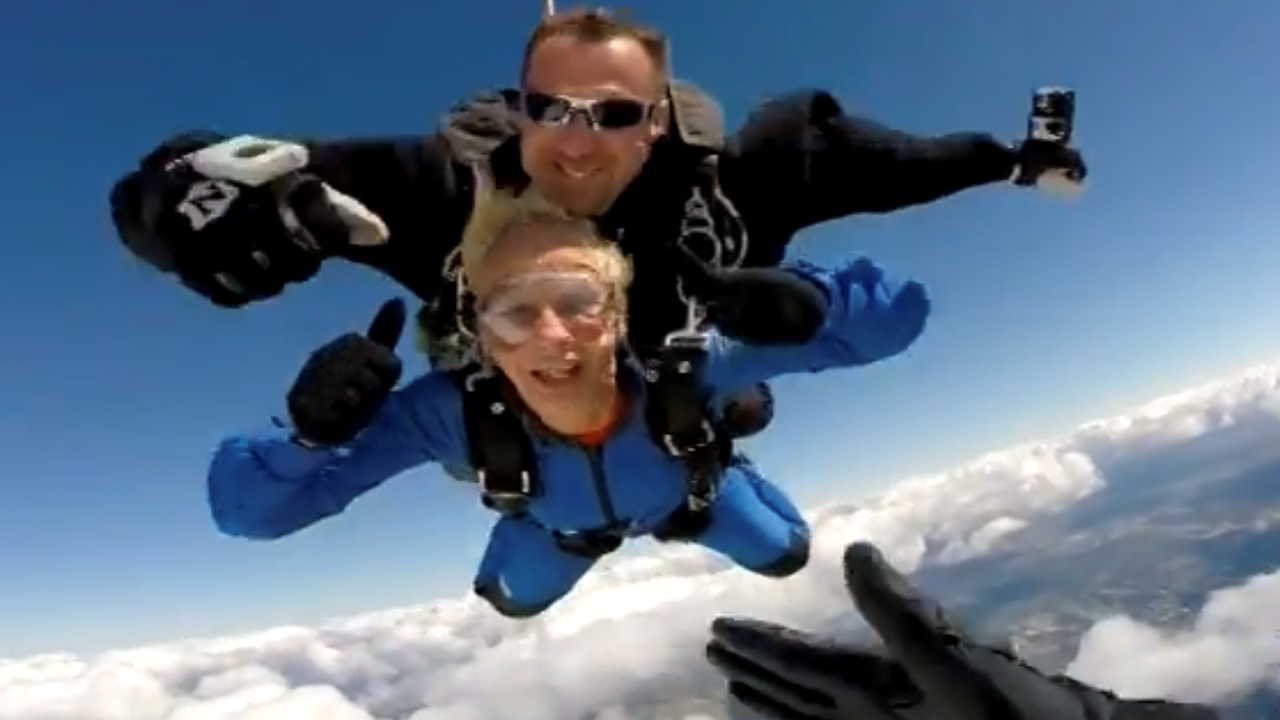"The surgeon replaced all the discs; had to break all of the vertebrae to restraighten my spine," Sandy recalls. She said the surgeon added 23 screws and rods to stabilize her back, and the rehabilitation required her to wear a cage brace for a year.
When Sandy's friend was scheduled to undergo back surgery at UC Health, she naturally asked Sandy to come along for support. It was following that friend's surgery that Sandy first met Rani Nasser, MD, assistant professor in the Department of Neurosurgery at the University of Cincinnati (UC) College of Medicine and neurosurgeon for the UC Gardner Neuroscience Institute at UC Health, who specializes in complex spine surgery.
Sandy and her friend's husband entered the consultation room following the surgery in April 2019 to receive a report from Dr. Nasser on the outcome. Considering the case took several hours, her friend's husband joked with Dr. Nasser and asked him if he was hungry or needed a bathroom break after all of that time in the operating room. Dr. Nasser’s response still strikes Sandy to this day.
"Dr. Nasser just smiled at him and said, 'I only have one thing on my mind: what are your concerns about your wife? That's what matters to me most.'" Sandy was struck by the sincerity of his comments. She says, "Right then and there, I knew there was something very special about this doctor."
She remembers Dr. Nasser taking his time and drawing pictures so that the patient's spouse would easily understand the procedure. "He explained how things would progress and took his time with every question," Sandy recalls.
Complex Spinal Revision Surgery
Remembering Dr. Nasser's bedside manner, she chose to schedule an appointment with him in March 2020 when she became very concerned about her left knee. Not only was her knee in pain, but at times it would give out. It was causing discomfort, which was keeping her from her daily routine, including the volunteer work she did with five different organizations throughout Greater Cincinnati.
Another doctor in Cincinnati had previously evaluated Sandy and ordered X-rays. When Sandy never heard back from that doctor, she assumed the X-rays showed no problems. Imagine her surprise when Dr. Nasser told her that the myelogram — a specialized diagnostic test that helps detect problems in the spinal cord, nerve roots and other tissue — showed there were major problems.
"It showed that my right rod was broken in two places, the pelvic screws were loose and the right screw was moving close to my spine," Sandy says. Dr. Nasser was shocked Sandy was able to withstand the pain.
"The screws that were placed previously were loose and eroding in her lower back to the point where she literally couldn't sit; she was in that much discomfort," says Dr. Nasser. "Also, the screws were loose up top, which prevented her from standing straight. It's really incredible at what she tolerated for so long."
Dr. Nasser explained to Sandy what went wrong and told her that he would essentially have to redo her previous surgery over the course of two days. Once again, she was impressed with the way Dr. Nasser took his time to explain the plan and listen to her concerns. "He heard every single word I said," she recalls.
Dr. Nasser told Sandy that he would have to redo her previous surgery. To do that, he would first need to fix the front of her spine with a procedure called an ALIF, which stands for anterior lumbar interbody fusion, before he’d be able to fix the problems from the previous surgery. On the first day of surgery, he would stabilize the symptomatic segment of the spine from L5 through the S1 vertebrae with the ALIF. On the second day, he could then replace the corroded screws, revise the decompression that was causing the leg pain and reposition the rods.


